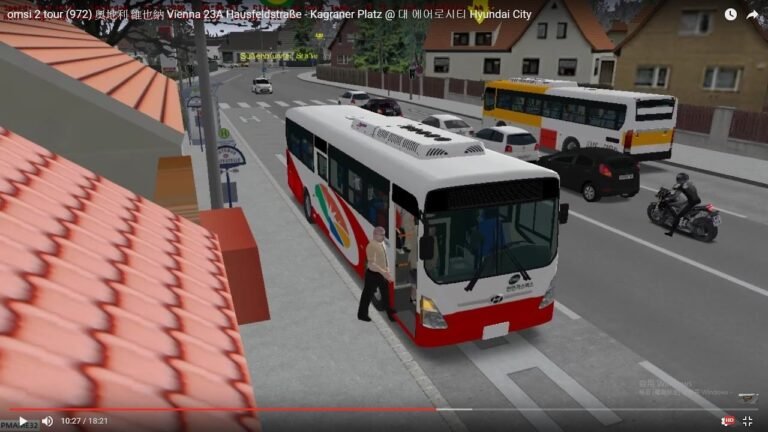
Real map :
維也納(德語:Wien;奧地利德語:Wean)是奧地利共和國首都和維也納邦首府,人口172.3萬人[5],都會區約240萬人[4],佔奧地利人口四分之一以上。維也納是歐洲著名的國際都市之一,擁有許多重要的國際組織,OPEC的總部也設於此。同時,維也納與美國紐約和瑞士日內瓦同為聯合國僅有的駐地城市。位於北緯48度12分5秒、東經16度22分38秒。因市內古典音樂氣氛濃厚,引來各國音樂家聚集於此,具「世界音樂之都」和「樂都」等美譽。第一次世界大戰以前是領域曾遍及除德意志以外的中東歐大部分地區的奧匈帝國首都。按照市區人口,它是歐盟第七大城。在20世紀初以前,它是德語圈最大的城市,奧匈帝國分裂之前,該市已經擁有200萬人口[6]。時至今日,它仍是德語圈第二大城市,僅次於柏林[7][8]。該市位於奧地利東部,靠近捷克、斯洛伐克和匈牙利邊界。其市中心古城區被列為世界遺產The busline 24A is located in the 22nd district of Vienna (Donaustadt). The reconstructed route from 2005 and today’s route are basically the same as they lead drive from Kagraner Platz to Invalidensiedlung. In addition, the former busline 24A of 2005 was even longer as you could drive to Kagran – the former final stop of the subway line U1 before its extension which had been a huge and important hub for bus lines and tram lines.
When the U1-extension in September 2006 took place, the busline 24A was shortened to Kagraner Platz and changed to low-floor operation which marked the end of the last high-floor bus LU 200 on this route.
——————————-
Bus type LU 200 M11 of Wiener Linien (Vienna’s public transport company)
The LU 200 M11 (=regular service bus with underfloor engine, 200 hp, 11m long) was especially constructed by the Austrian manufacturer ÖAF Gräf & Stift and Steyr-Daimler Puch for Wiener Linien. The body is similar to the first generation of German VÖV standard urban regular service buses but it has an additional third passenger door in the back as it is common for Vienna buses. The bus uses a spark ignition engine for LPG operation.
Consisting of 345 buses, the LU 200 is by far the biggest bus series in the history of Wiener Linien and was manufactured as the longest too (1978-1992). The last LU 200 was used for public transport by Wiener Linien on 21 May 2007. The very last LU 200 served as a driving school bus and was finally retired after about 30 years on 9 March in 2009.
Der Gräf/Steyr LU 200 M11 ist ein ursprünglich hauptsächlich in Wien von den Wiener Stadtwerken (Wiener Linien) eingesetzter Hochflur-Stadtlinienbus. Der Typ wurde in den Jahren 1978–1992 von den österreichischen Firmen Gräf & Stift (Fahrwerk) und Steyr (Aufbau) hergestellt.
source